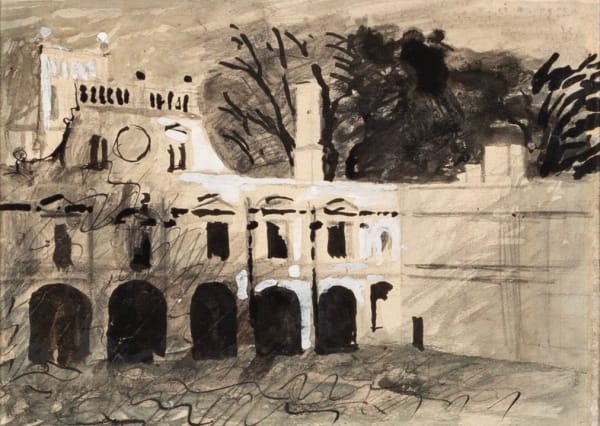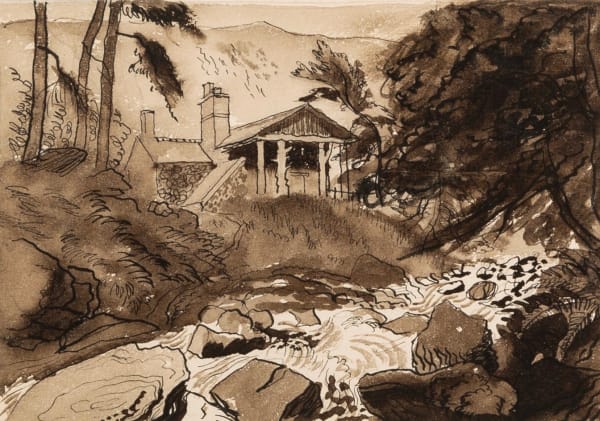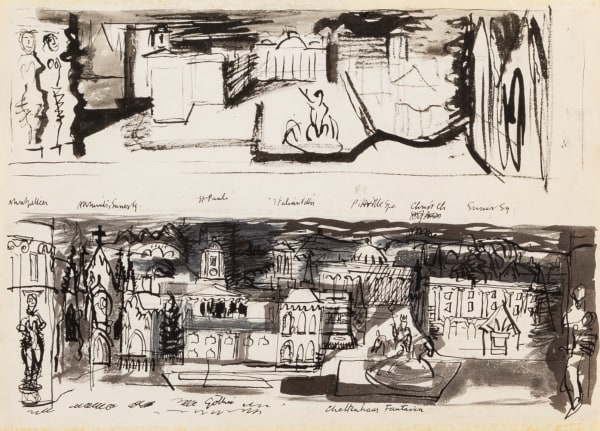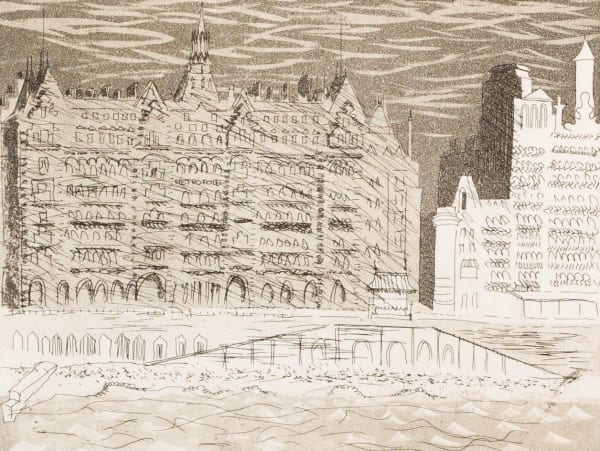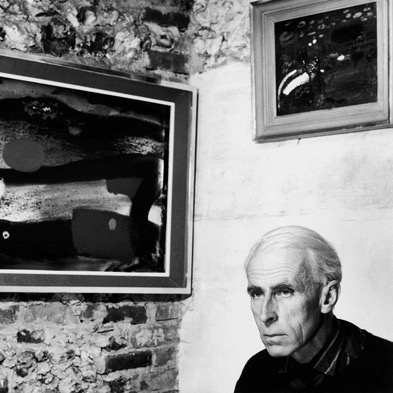John Piper Paintings for Sale1903-1992
-
 Cheltenham - Queen's Parade, 1939 circa
Cheltenham - Queen's Parade, 1939 circa -
 Kirby Hall, Northamptonshire, 1940-1942 circa
Kirby Hall, Northamptonshire, 1940-1942 circa -
 Foot of Pistyll Rhaeadr, 1939-1941, circa
Foot of Pistyll Rhaeadr, 1939-1941, circa -
 Cheltenham (Fantasia/Panorama), 1939 circa£ 4,950.00
Cheltenham (Fantasia/Panorama), 1939 circa£ 4,950.00 -
 Nursery Frieze II, 1936£ 4,750.00
Nursery Frieze II, 1936£ 4,750.00 -
 Metropole Hotel from West Pier, from Brighton Aquatint, 1939£ 1,350.00
Metropole Hotel from West Pier, from Brighton Aquatint, 1939£ 1,350.00 -
 Prometheus by Edwin Muir, from Ariel Poems, 1954£ 750.00
Prometheus by Edwin Muir, from Ariel Poems, 1954£ 750.00
John Piper was a painter of architecture, landscape and abstract compositions, a designer for the theatre and of stained-glass windows, and a writer on the arts.
Piper was born in 1903 in Epsom, Surrey, the son of a solicitor. Throughout his childhood, he regularly visited Italy, and by 1924 he had published a book of poems and his own illustrations. He worked in his father's office in Westminster until 1928 when he began studying at the Richmond and Kingston Schools of Art. This was followed by two years study at the Royal College of Art. In 1927 he exhibited with David Birch at the Arlington gallery, and in 1931 with Clarice Moffat, P. F. Millard, and his first wife Eileen Holding at the Mansard Gallery in the Heal's store. From 1928 Piper was also contributing towards the Nation.
Piper was a member of the London Group from 1933, and of the Seven and Five Society from 1934 to 1935, exhibiting alongside Henry Moore, Ivon Hitchens, Cedric Morris, Ben and Winifred Nicholson, Christopher Wood, Barbara Hepworth and David Jones. That same year he married Myfanwy Evans, the writer, and for the next two years assisted her on Axis - a Quarterly Review of Contemporary ‘Abstract’ Painting and Sculpture. He began writing for the Architectural Review in 1938, the same year in which he published the first of his popular guidebooks.
In 1938 Piper held his first solo exhibition at the London Gallery where he displayed a collection of his collages and drawings. His early work consisted primarily of landscapes, inspired by his time spent on the south coast with Ben Nicholson, Henry Moore and Ivon Hitchens. His time with these artists and a visit to Paris in 1933, had turned Piper to abstraction. He put these lessons behind him around the time of the onset of the Second World War and focused his energies on representing the British landscape, particularly its architectural subjects. It was around 1939 that Piper first met Sir Osbert Sitwell, who became a great supporter of the artist.
He designed the stage for Stephen Spender's Trial of a Judge in 1938, for the ballets The Quest in 1943 and Job in 1948, and for six operas by Benjamin Britten. Piper was an Official War Artist from 1940 to '42, recording sites which were threatened with bombing such as Windsor Castle, and those which suffered bombing in Coventry, Bath, Bristol and London.
His first international exhibition was at the Buchholz Gallery, New York, in 1948, and he was commissioned to paint decorations for the British Embassy in Rio de Janeiro that same year. International exhibitions followed at Curt Valentin Gallery, New York (1955), Kunstzall Magdalene Sothmann, Amsterdam (1956), Durlacher's, NY (1957), and Gallery Kasahara, Japan (1976).
In 1951 he supervised the design of the Battersea Pleasure Gardens with Osbert Lancaster. He was also commissioned to design the windows for the Chapel at Oundle School in 1954, and the baptistery of the new Coventry Cathedral in 1958.
Between 1963 and '64, Piper produced 'A Retrospect of Churches' in collaboration with his friend John Betjeman, with whom the artist has visited many of the subject churches. Betjeman praised Piper for his love of all architecture: 'He responds to Renaissance monuments ... the originality and sense of scale of the great Victorian architects ... [and] Gothic conventions'.
His work is included in numerous public collections, as well as Deutsche Bank. The inclusion of his work in the Tate's Walk Through British Art was commented on by Alexandra Harris, “There are things that British artists tend to do wonderfully well ... There’s a certain complex, understated colouring that recurs. John Piper thought it was partly about the weather: British eyes are accustomed to seeing things in a certain light. This is simple but makes sense. The great Spanish painters specialise in black shadows and intense light. The British are better at fathoming a thousand varieties of grey and green.”
Piper published many books, including English Romantic Artists, and a collection of his articles, Buildings and Prospects in 1948. He was a Trustee of the Tate Gallery from 1946 to '52, and again from 1954 to '61. He was also a member of the Arts Council panel between 1952 and '57.

